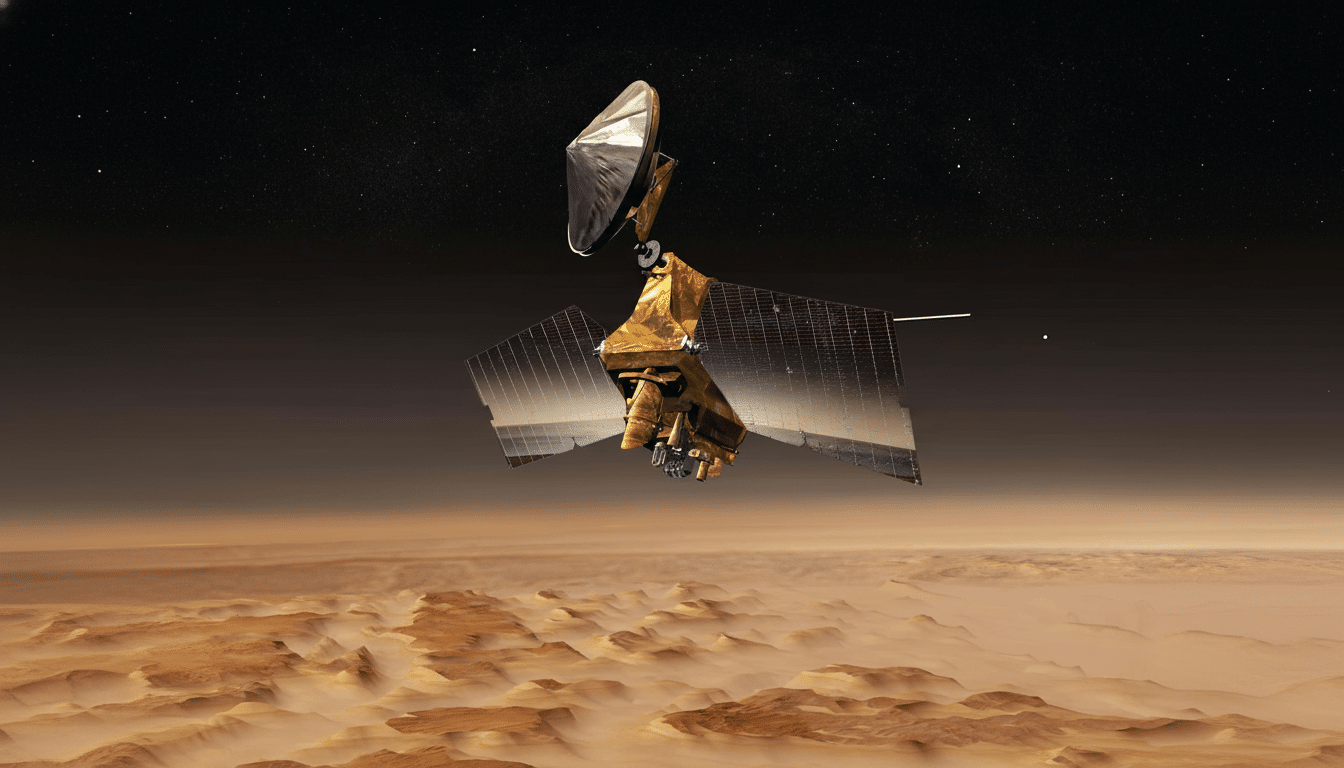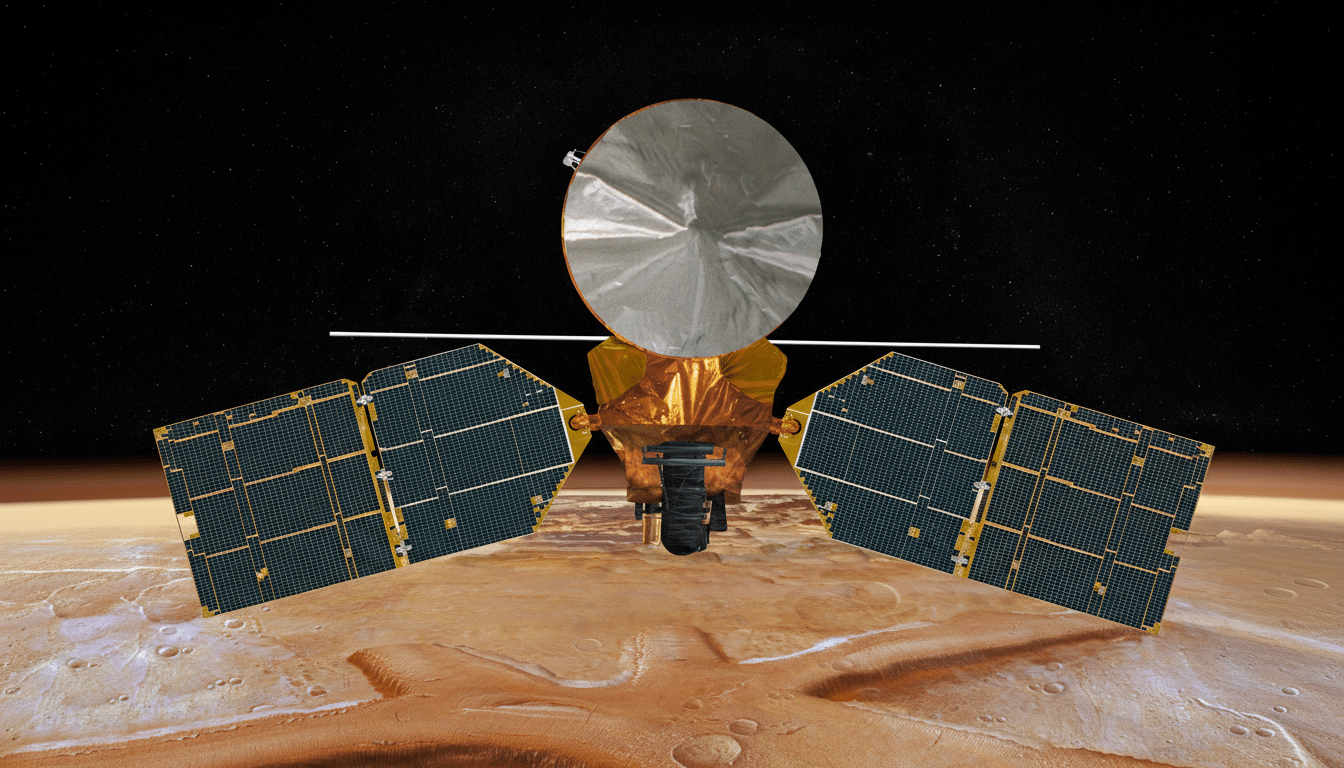Those eerily straight, squiggly ditches that wind across Martian sand dunes have puzzled planetary scientists for decades. Now, an earth scientist has reproduced them in the lab and determined the culprit: slabs of dry ice that don’t just slip but delve, carving out tunnels that look like live things out from under the thin air of Mars.
The results, led by Lonneke Roelofs of Utrecht University and published in Geophysical Research Letters, help explain “linear dune gullies”—slender grooves that are seen running along the slopes of dunes, often terminating in a tiny pit alongside low ridges. These features morph today, not just somewhere in the Martian past, with time-lapse imagery from NASA’s Mars Reconnaissance Orbiter (MRO) and the HiRISE camera operated by the University of Arizona.

A Lab On Earth Reconstructed Martian Dunes
Rather than simply run some computer models, Roelofs and a graduate student found a Mars chamber at The Open University in the United Kingdom, and dialed down atmospheric pressure to Mars-like levels—less than 1 percent of Earth’s sea-level pressure—and loaded the testbed with fine, well-sorted sand.
Their team deposited blocks of carbon dioxide ice on slopes with a range of gradients. The behaviour bifurcated into two regimes. When the inclines were steeper, it left just skid marks snaking downhill with shallow, thin marks etched within. On shallower slopes, the physics was different: The underside of the dry ice started to sublimate—moving directly from a solid to a gas—and gas that had been confined beneath escaped with explosive force into the sand. That stream of gas blasted and fluidized grains, enabling the block to burrow down and forward while gouging a deeper and more serpentine trench.
In the low-pressure CO₂ environment of the chamber, this makes for a low-friction, Leidenfrost-like hover—albeit one with enough thrust for grains to rise and bulldoze into flanking levees. The result is consistent with what MRO has documented on dunes at places like Hellas Planitia and Russell Crater: long, narrow channels that may be just a meter or two across but tens to hundreds of meters long, sometimes possessing a telltale terminal pit.
Dry Ice Avalanches That Tunnel, Not Just Slide
The southern winter on Mars not only delivers frost to the dunes, it also provides a seasonal deposit of carbon dioxide frost, which is better known as dry ice.
“Look for frost,” said Candice Hansen, of the Planetary Science Institute and one of the report’s co-authors. Then, when spring sunshine returns, that ice warms from the bottom, pressure builds up, and pieces destabilize and start to shift. Roelofs’s experiments demonstrate that on gentle inclines, a moving ice flow doesn’t require liquid water to gouge complex channels; sublimating gas provides the necessary energy.

That mechanism also accounts for numerous curious features that can be spotted from orbit, the researchers said. The levees are a natural consequence of excavation driven by gas. The end pits are developed where the block is decelerated to a stop and vents, creating a domed concavity. And the “squiggles” come from that, as the burrowing ice scours a path of least resistance through patches of slightly differing grain packing, generating sinuosity in the absence of any flowing fluid.
Why Only Some Martian Dunes Grow These Gullies
Not all Martian dunes host these features, and the lab reveals the key filter: grain size and sorting. The team determined that extremely fine, similarly sized sand (which is roughly what active barchan and transverse dunes prefer) allows gas to percolate its way through and fluidize the bed. The gas-flow speed and the burrowing, necessary for gully establishment, are impeded by coarse grain size distribution, jaggedness or poor sorting of grains.
That selectivity lines up with what HiRISE has long been mapping: linear dune gullies tend to form in places where large, mobile dune fields and a fine-grained mantle collide. It suits their short-lived nature as well. The freshly carved channels can fade or be buried as dunes migrate in Mars’ unrelenting winds. Gully activity has been seen in pairs of photos taken a decade or so apart by MRO and managed by NASA and university teams monitoring the longest-living set of features; within the dunes themselves, they appear to shrink and expand seasonally.
Rethinking Water’s Role On Modern Mars Today
For decades, twisting channels on other worlds were interpreted as guide signs of past running water. Linear dune gullies urge caution. They are clearly active today on Mars and their forms—sinuous, leveed and pitted channels—can result from a cold desert process driven by CO₂ sublimation under the low pressure of Mars.
That doesn’t undercut the extensive evidence for ancient rivers and lakes documented elsewhere on Mars, including the layered deltas observed by rovers and orbiters. But it does help sharpen how scientists interpret the small, modern features. Roelofs’s work provides predictions for imaging to test in the future: Gullies do or should form or grow during the CO₂ frost season, and do show preferences for dunes with fine (uniform) grain size. It also creates a well-defined list of targets for ongoing monitoring by MRO—or ultimately aerial or ground-based platforms that could capture firsthand evidence of CO₂-driven avalanches.
To put it bluntly, Earth has reverse-engineered Mars in a box and solved the Martian mystery. The planet’s bizarre dune gullies are not fossils of a wetter time—they are the product of in-season dry ice, burrowing through paper-thin air and chiseling sand in real time.

